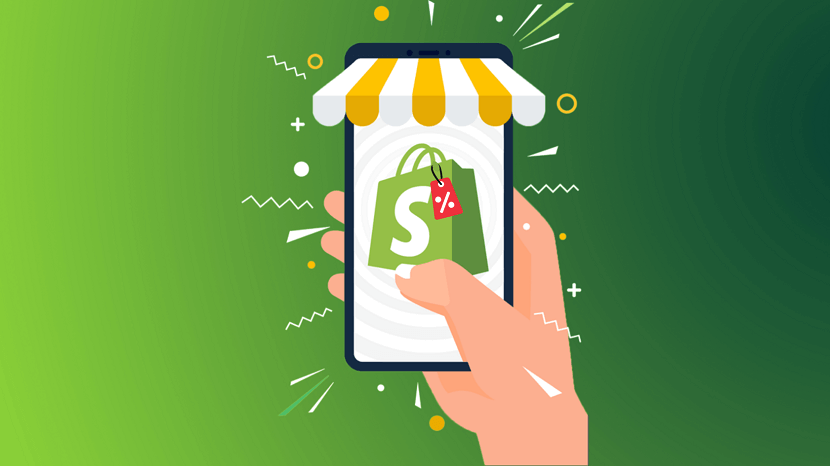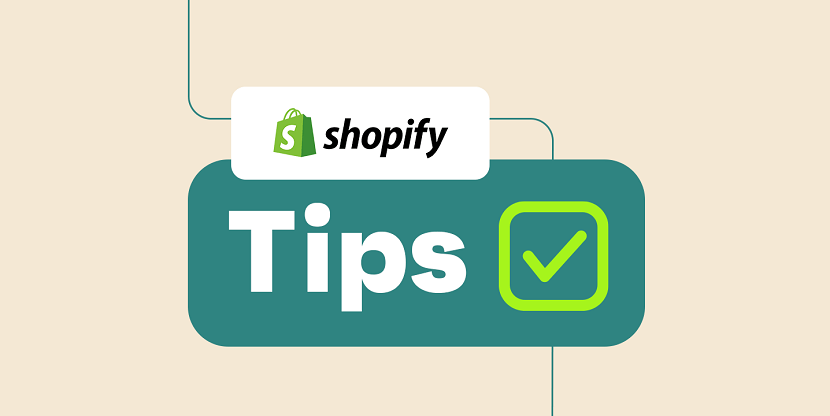How to Sell or Promote your Shopify Store?
Last updated on January 19, 2025 by RGB Web Tech

Promoting your Shopify store is vital for driving traffic and increasing sales. Utilize social media marketing by creating engaging content and collaborating with influencers. Implement content marketing through blogging and guest posting to boost visibility. Leverage email marketing to nurture customer relationships and provide exclusive promotions. Optimize your store for search engines with SEO techniques and consider running targeted paid advertising campaigns. Explore influencer partnerships and seek customer reviews and referrals to build trust. Regularly analyze the performance of your promotional efforts and make data-driven adjustments to optimize your store's growth.
How to Sell or Promote your Shopify Store?
Promoting your Shopify store is crucial to driving traffic, increasing sales, and growing your business. Here are some effective strategies to promote your Shopify store:
1. Social Media Marketing
- Create business accounts on popular social media platforms like Facebook, Instagram, Twitter, and LinkedIn.
- Regularly post engaging content related to your products, industry, and brand.
- Use high-quality images, videos, and compelling captions to grab attention.
- Engage with your audience by responding to comments, messages, and mentions.
- Collaborate with influencers or micro-influencers in your niche to reach their followers.
- Run targeted paid advertising campaigns on social media platforms to reach a wider audience.
2. Content Marketing
- Start a blog on your Shopify store and publish informative, valuable, and engaging content related to your products or industry.
- Optimize your blog posts for search engines by incorporating relevant keywords.
- Share your blog posts on social media and encourage readers to visit your store.
- Consider guest posting on relevant industry websites or collaborating with other bloggers to expand your reach.
3. Email Marketing
- Build an email list by offering incentives such as discounts, free guides, or exclusive content in exchange for email addresses.
- Send regular newsletters to your subscribers with updates, promotions, and new product announcements.
- Personalize your emails based on customer preferences, purchase history, and behavior.
- Use automated email sequences for abandoned cart reminders, customer follow-ups, and post-purchase emails.
4. Influencer Marketing
- Identify influencers or bloggers in your niche who have a significant following and align with your brand.
- Reach out to them and propose collaborations, such as product reviews, sponsored posts, or giveaways.
- Offer them free products or commissions on sales generated through their unique referral codes or affiliate links.
5. Search Engine Optimization (SEO)
- Optimize your Shopify store for search engines to improve organic visibility.
- Conduct keyword research to identify relevant and high-volume search terms related to your products.
- Incorporate these keywords in your product titles, descriptions, meta tags, and URLs.
- Generate high-quality backlinks by reaching out to industry blogs or websites for guest posting or collaborations.
6. Paid Advertising
- Consider using platforms like Google Ads or Facebook Ads to run targeted advertising campaigns.
- Set a budget, define your target audience, and create compelling ad copies and visuals.
- Monitor the performance of your ads and optimize them based on key metrics such as click-through rate (CTR) and conversion rate.
7. Collaborations and Partnerships
- Identify complementary businesses or brands with a similar target audience and explore partnership opportunities.
- Cross-promote each other's products or run joint marketing campaigns.
- Participate in local events, trade shows, or online marketplaces to gain exposure and connect with potential customers.
8. Customer Reviews and Referrals
- Encourage satisfied customers to leave reviews on your Shopify store or popular review platforms.
- Offer incentives or loyalty programs for customers who refer their friends or family members to your store.
Remember, it's important to track and analyze the results of your promotional efforts. Monitor website analytics, conversion rates, and customer feedback to understand what strategies work best for your store and make data-driven adjustments accordingly.
Conclusion
Promoting your Shopify store is an ongoing process that requires a strategic and multi-faceted approach. By utilizing social media marketing, content marketing, email marketing, SEO, paid advertising, influencer collaborations, and customer referrals, you can effectively drive traffic and increase sales. Regularly analyze the performance of your promotional efforts and make data-driven adjustments to optimize your store's growth. Remember to engage with your audience, provide valuable content, and prioritize customer satisfaction. With consistent effort and adaptability, you can successfully promote your Shopify store, expand your reach, and achieve long-term success in the competitive e-commerce landscape.
If you found this article helpful, we encourage you to share it on your social media platforms—because sharing is caring! For more information about article submissions on our website, feel free to reach out to us via email.
Send an emailWritten by RGB Web Tech
Latest Technology Trends
Latest technology trends shaping the future, including AI advancements, blockchain innovation, 5G connectivity, IoT integration, and sustainable tech solutions. Explore breakthroughs in quantum computing, cybersecurity, augmented reality, and edge computing. Stay ahead with insights into transformative technologies driving innovation across industries and revolutionizing how we live, work, and connect.
Tips for Shopify Store all New Owner Need to Know
Last updated on January 19, 2025 by RGB Web Tech

If you're a new store owner on Shopify, there are several key tips you should know to maximize your success. First, select a clean and professional theme that aligns with your brand identity. Customize your store's appearance and optimize your product pages with compelling descriptions and high-quality images. Streamline your checkout process to reduce cart abandonment, and set up shipping and fulfillment options to provide a smooth customer experience. Implement SEO best practices to increase organic traffic, leverage social media and marketing channels, and install essential apps to enhance your store's functionality. Monitor analytics, provide excellent customer support, and continuously refine your strategies for long-term success.
Shopify Tips All New Store Owners Need to Know
If you're a new store owner on Shopify, here are some tips to help you get started and make the most out of your Shopify store:
1. Choose a clean and professional theme: Select a visually appealing theme that aligns with your brand identity and provides a user-friendly experience for your customers. Shopify offers a wide range of free and paid themes to choose from.
2. Customize your store: Take advantage of Shopify's customization options to create a unique store that stands out. Customize your theme's colors, fonts, and layout to match your branding. Add a logo, high-quality product images, and compelling product descriptions.
3. Optimize your product pages: Make sure your product pages are well-optimized for conversions. Use clear and enticing product titles, include detailed descriptions, and highlight the benefits and unique selling points of your products. Add high-quality images and consider using product videos to showcase your items.
4. Streamline your checkout process: Simplify the checkout process to reduce cart abandonment. Enable guest checkout, minimize the number of required form fields, and offer popular payment options like credit cards, PayPal, and Apple Pay. Install trusted payment gateways to ensure secure transactions.
5. Set up shipping and fulfillment: Configure your shipping settings accurately, including shipping rates, zones, and carrier integration if applicable. Consider offering free shipping or setting up conditional free shipping based on order value. Streamline your fulfillment process by integrating with fulfillment apps or services.
6. Implement SEO best practices: Optimize your store for search engines to increase organic traffic. Use relevant keywords in your product titles, descriptions, and meta tags. Create unique and descriptive page titles and URLs. Install an SEO app to help you manage and improve your store's SEO performance.
7. Leverage social media and marketing channels: Promote your store and products through social media platforms like Instagram, Facebook, and Pinterest. Run targeted ads to reach your ideal audience. Implement email marketing campaigns to engage with your customers and drive repeat sales.
8. Install essential apps:Shopify's app store offers a wide range of apps to enhance your store's functionality. Install apps for email marketing, social media integration, analytics, customer reviews, and more. However, be cautious not to install too many apps that could slow down your store's performance.
9. Monitor analytics and make data-driven decisions: Utilize Shopify's built-in analytics or integrate with third-party analytics tools to track your store's performance. Monitor key metrics such as sales, conversion rates, traffic sources, and customer behavior. Use this data to identify areas for improvement and make informed decisions to optimize your store.
10. Provide excellent customer support: Offer multiple channels for customer support, such as live chat, email, or phone. Respond promptly to customer inquiries and provide helpful and friendly assistance. Positive customer experiences can lead to repeat purchases and word-of-mouth recommendations.
Remember, building a successful online store takes time and effort. Continuously monitor and refine your strategies, stay up to date with the latest e-commerce trends, and adapt your approach based on customer feedback and market demands.
Conclusion
In conclusion, as a new store owner on Shopify, implementing these tips can greatly benefit your business. By choosing a professional theme, customizing your store, and optimizing your product pages, you'll create an appealing and user-friendly shopping experience. Streamlining your checkout process, setting up shipping and fulfillment, and implementing SEO best practices will help drive conversions and attract organic traffic. Leveraging social media and marketing channels, installing essential apps, and monitoring analytics will further enhance your store's performance. Lastly, providing excellent customer support ensures a positive experience for your customers, leading to repeat sales and growth. By following these tips, you'll be on your way to building a successful Shopify store.
If you found this article helpful, we encourage you to share it on your social media platforms—because sharing is caring! For more information about article submissions on our website, feel free to reach out to us via email.
Send an emailWritten by RGB Web Tech
Latest Technology Trends
Latest technology trends shaping the future, including AI advancements, blockchain innovation, 5G connectivity, IoT integration, and sustainable tech solutions. Explore breakthroughs in quantum computing, cybersecurity, augmented reality, and edge computing. Stay ahead with insights into transformative technologies driving innovation across industries and revolutionizing how we live, work, and connect.
